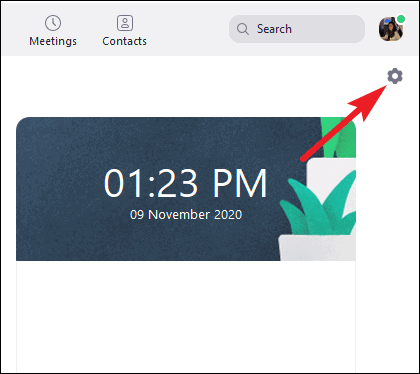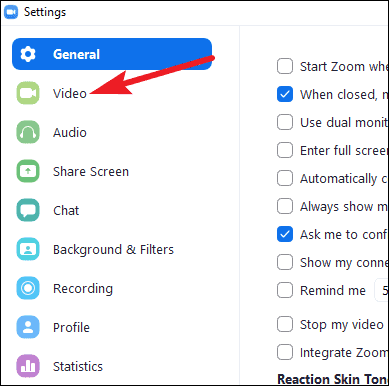Without video conferencing apps like Zoom, this year would have been a lot more difficult to navigate than it already is. But while Zoom meetings have been our saviors this year, they haven’t been as good for our data packs.
Video conference meetings can be a real nightmare from the point of view of data, and Zoom’s no different; it’s a real glutton when it comes to eating data. So when you don’t have a pack with unlimited data, is there a solution to this problem that doesn’t include finding one? Not everyone has access to an unlimited data plan at a fair price point, after all.
Fortunately, there are a few practices that’ll help you cut down on your data usage. But first, let us see how much data do Zoom meetings use. Only when equipped with the right information, you’ll be able to decide whether you need to reduce the data usage on your current Wi-Fi plan.
How Much Data do Zoom Meetings Use?
Although this isn’t an exact measurement, the figures are close enough to give you an idea of how much data you end up using in a Zoom meeting.
For a 1:1 meeting, the data you use can vary somewhere between 540 MB/hr to 1.62 GB/hr, depending upon your video streaming quality.
| Quality | Download | Upload | Total |
| High | 270 MB/hr | 270 MB/hr | 540 MB/hr |
| 720p | 540 MB/hr | 540 MB/hr | 1.08 GB/hr |
| 1080p | 810 MB/hr | 810 MB/hr | 1.62 GB/hr |
The download data here refers to the data used up in downloading the video stream of the other person in the call, and the upload data is the data used up in broadcasting your video to them.
The more people in the call, the more the data usage. For group calls, data usage can jump from 810 MB/hr to 2.4 GB/hr for different video qualities.
| Quality | Download | Upload | Total |
| High | 450 MB/hr | 360 MB/hr | 810 MB/hr |
| 720p | 675 MB/hr | 675 MB/hr | 1.35 GB/hr |
| 1080p | 1.2 GB/hr | 1.2 GB/hr | 2.4 GB/hr |
Without proof, it could have seemed like an exaggeration that Zoom gobbles up your data. But numbers don’t lie. Now, if you can afford to use up this much data in your calls, you don’t need to take any further action. But if not, then read on ahead.
How to Reduce Data Usage
There are some ways you can reduce your data usage in Zoom meetings, and some work better than others. It’s not possible to always follow all these practices, but use them when you can. And it’ll be better than doing nothing.
Turn Your Video Off When you Don’t Need it
We know that it is a “video” conference, but when it comes to saving data, it’s the most efficient way. A lot of your data, after all, goes towards streaming your video to other people in the call. Now, there are instances where you have to have your video on; those are unavoidable.
But sometimes, you don’t really need your video – the main use case being when you or someone else in the meeting is sharing their screen. Everyone’s focus is on the content being shared, and you can go without your video.
Click the ‘Stop Video’ button on the meeting toolbar to turn your video off in the meeting at any time.

Turn Off HD Video
Zoom has an option that lets you stream your video in HD to others. But when you’re trying to save some data, it’s better to turn it off. Your video quality won’t be too degraded, but the amount of data you’ll save will be huge.
To turn off the HD video, open Zoom settings.

Go to ‘Video’ from the navigation menu on the left.

Under ‘Camera’ settings, uncheck the option for ‘HD’.

Share Your Screen Only When Necessary
Screen sharing in Zoom is a blessing when working or teaching remotely. But screen sharing can take a toll on your data, even more so than simply having a video call.
So, only share your screen when you have to, and end the screen-sharing session as soon as you don’t need it. You can also ask other participants in the meeting to end their screen sharing as soon as their demonstration is over.
Use Collaborative Documents Instead of Screen Sharing
When you have to work on a document together in real-time, use online collaborative documents like Google Docs, Office Online apps, and any others instead of sharing your screen.
Collaborative documents use much less data than screen sharing, and everyone can see the changes to the document in real-time. But with collaborative documents, you don’t get the option to just share all the changes in real-time but also work on documents together if you want. It’s clearly the superior choice for documents.
Mute Your Audio When You’re Not Speaking
Although streaming your audio doesn’t take up much data, you can still save at least some data by muting it when you’re not speaking. It’s also the basic virtual meeting etiquette, so you’d seem professional while also saving some of your data. It’s a win-win.
Click the ‘Mute’ button on the meeting toolbar to turn off your audio. Click the button again to unmute. You can also use the keyboard shortcut ‘Alt + A’ if you’re quicker with a keyboard than your mouse/ trackpad.

Now that we’re all working from home, we’re using our Wi-Fi like never before. And for those who don’t have access to an unlimited plan, Zoom calls can become a bit of a problem. But with these tips, you’d be able to get a better handle on the situation.










Member discussion